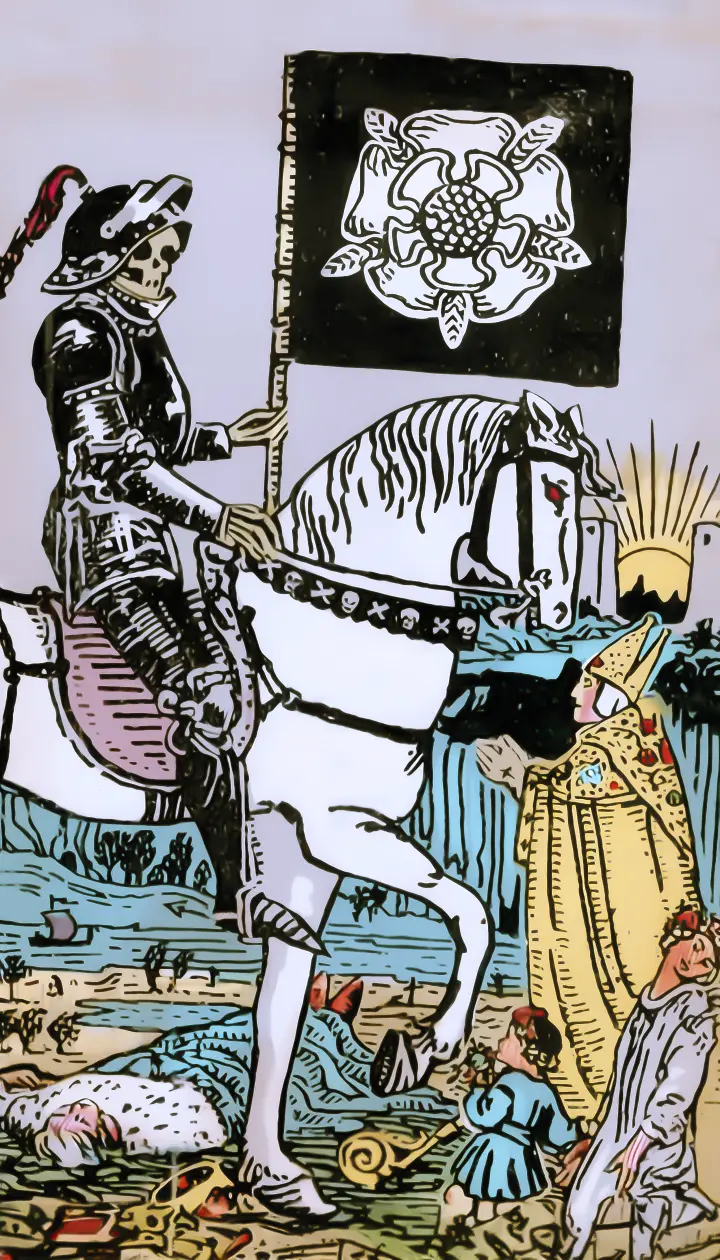
The Death Card Fully Explained
By DivinationToolThe Death card represents profound endings and the opportunity for transformation and renewal. This article explores both the upright and reversed meanings of the Death card, clarifying its symbolism of inner change and new beginnings.
The Death Card Fully Explained | Endings, Transformation, and Renewal
Associated Information
Related Keywords: Mysterious and unknown power, rebirth Corresponding Zodiac: Scorpio Element: Water Element
Key Words
The end of a relationship, revolutionary, new beginnings, rebirth through fire, symbol of death, inner endings, the conclusion of a life phase, about to start a new phase, leaving the past behind.
Upright Interpretation
The existing situation must come to an end; the time has come for a new beginning; clearing away the bad past; focusing on a fresh start; saying farewell to past history; embarking on a new journey; bringing inner closure; experiencing drastic changes.
Reversed Interpretation
The rebirth phase has already been experienced; the revolution is complete; the past has been left behind; loss, ending, failure, illness; the time to emerge from the shadows has come; there is no room left.
There are two common interpretations for the reversed Death card: ① The querent has already passed the trial of Death and can move forward again, potentially finding a new opportunity or restarting a relationship. ② The querent, currently undergoing the trial of Death, is unwilling to abandon parts of themselves, perhaps refusing to acknowledge or change past mistakes, resulting in being trapped in a deadlock, unable to move forward. These two interpretations represent the major divergence seen in the reversed Death card, and which one to apply depends on the reader’s intuition and choice. Additionally, since Death is closely associated with illness, when this card appears, one must pay attention to physical health; illnesses might be caused by external factors (such as fractures, viral infections, etc.).
Detailed Meaning of the Card
The "Death" card is not about literal death or hopelessness; rather, it represents a faint glimmer of hope — the classic symbol of rebirth through fire.
The number XIII "Death" card is often feared by all, yet its terror within the Tarot is not as severe as that of "The Tower." The plague banner held by Death brings disease and death, and the tower in the background symbolizes the gate to the underworld. However, these death-related images are psychological forces rather than the destruction of the external material world. Just as the flowing water in the card represents the subconscious, its destructive force comes from within. The "Emperor," as the ruler of the material world, can be destroyed and can die; however, the surviving "Hierophant" and the child symbolize the immortality of the spirit and the endless cycle of new life.
Death signifies destruction and ending, but actual physical death is rare. As depicted on the card, not everyone has died. Here, Death represents symbolic death: the fallen king symbolizes the fall of power and wealth, while the Hierophant, representing the spiritual world, survives and welcomes Death, indicating that spirit does not die. The child symbolizes new life, the end of the old, and the coming of the new — renewal. The distant sun suggests the light of hope. Thus, this card speaks of both death and life: what we lose are the things that hinder our progress.
It also represents a turning point: In relationships, it might mean the romantic relationship has ended and transformed into pure friendship, or that two lovers have entered the new stage of marriage — a phase transition.
The maiden turning away her head symbolizes how many people in the world refuse to face death, using denial to escape (often constructing worldly meanings to numb themselves), as if life would never end. As a result, people often get stuck on their life path, lost, not knowing where to go, or trapped in their current dilemma, unwilling to climb out. However, one day we will all reach the end; the trial of Death will always exist, blocking our way forward until we face it. Only by recognizing our present position and reflecting on our current situation — by understanding that life is finite and that the path and decisions are ours to make — can we adjust ourselves more effectively and take responsibility for our choices and actions.